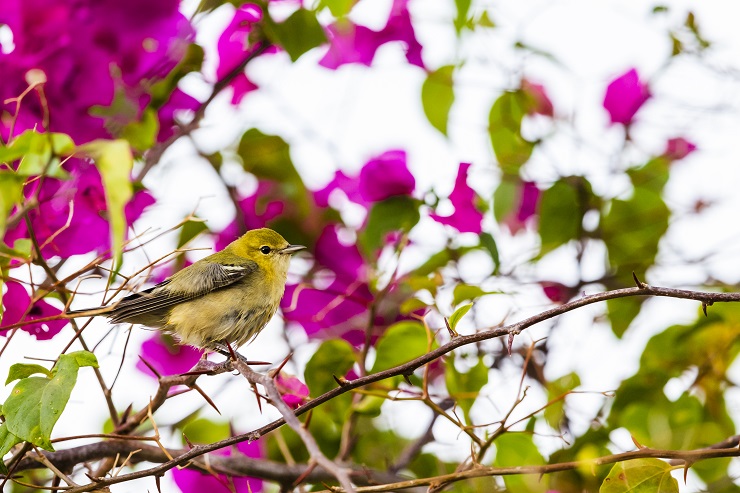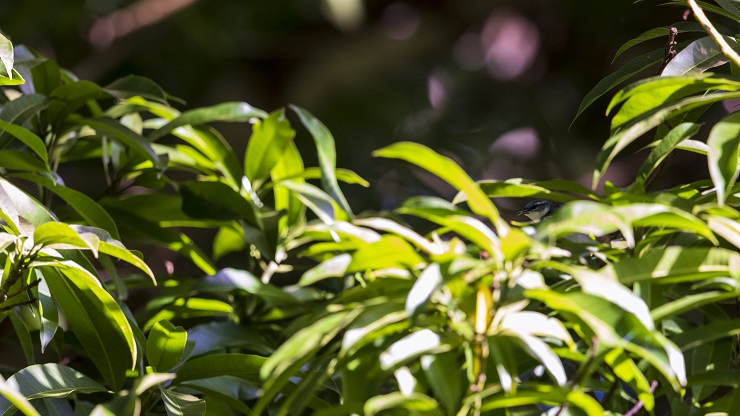
This time of year the canopies of the Neotropics are alive with countless warblers escaping the cold grip of the northern winter. Here in Trinidad, we routinely experience several of these migrants – most of these birds surely pass by unrecorded as not everyone is a birder and not all birders are huge fans of suffering from Warbler Neck.
Some of the commonest species found throughout Trinidad and Tobago are American Redstart, Yellow Warbler, and Northern Waterthrush. Each brings its distinctive, cheerful addition to the soundscape of forests and wetlands across T&T. Finding any warblers besides these and the three resident species requires considerable good fortune. Which is why one lazy afternoon after lunch I nearly lost my wits upon seeing a bird I couldn’t immediately recognize on our front fence!
Picture this – I’m in full digestion mode and enjoying looking at a gentle shower of rain in the afternoon sun. I love backlight (this is often reflected in my photography) and the light passing through each droplet of rain truly soothed my soul. The rain eventually subsided, and a couple birds hopped into view. One in particular, caught my eye. Somehow, I couldn’t peg it to any of my familiar yard species. I stared at it, bare-eyed, for approximately five minutes. Convinced it wasn’t going further as it seemed content picking off insects from various plants in our front yard, I ran through the house for my binoculars – startling my wife and our cat equally. Yes, I knocked over a few things in haste. But this was important. I was mumbling “warbler this warbler that” interspersed with other words I can’t repeat here.
I ran outside with my binoculars but couldn’t locate the bird. I needed to find it, but it seemed to have disappeared. Typical warbler, I thought. Sheepishly returning inside, I noticed some movement on our bougainvillea tree. Putting my binoculars to my eyes, there it was. I noted its features as quickly as I could. Overall coloration, wing bars, streaking on the upperparts, leg color – Bay-breasted Warbler! I hadn’t seen one in years and surely never dreamed of seeing one this well from home!

Fortunately the Bay-breasted Warbler stuck around for a while.
A few days later, I was on a brief walk through some cocoa estates with a friend of mine. It had been a slow morning, rain had interrupted much of the birding – but a flash of white caught my eye on a large mango tree. Initially I thought it was a Black-and-white Warbler, as one had been reported from this very area a couple days prior. To my delight when I saw it properly – this bird was not black and white but in fact blue and white – it was an adult male Cerulean Warbler!

You may have to hold your binoculars up to the screen – imagine how difficult it was in the moment to track this Cerulean Warbler!
I later learned that I’m the first person to find two Cerulean Warblers in T&T (also the only person to find one in Tobago, back in 2015).
Oh, the things that turn up when you’re not even looking.













Leave a Comment